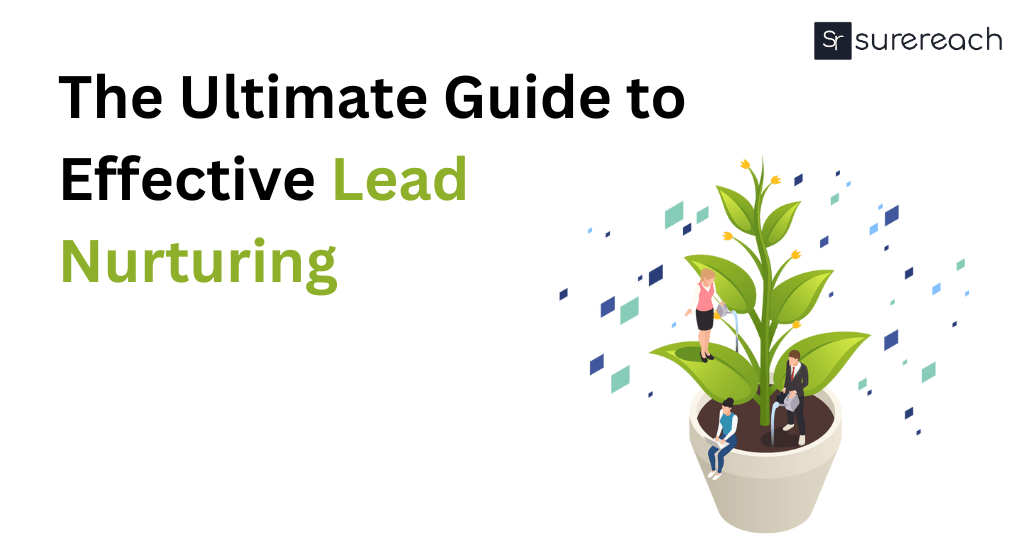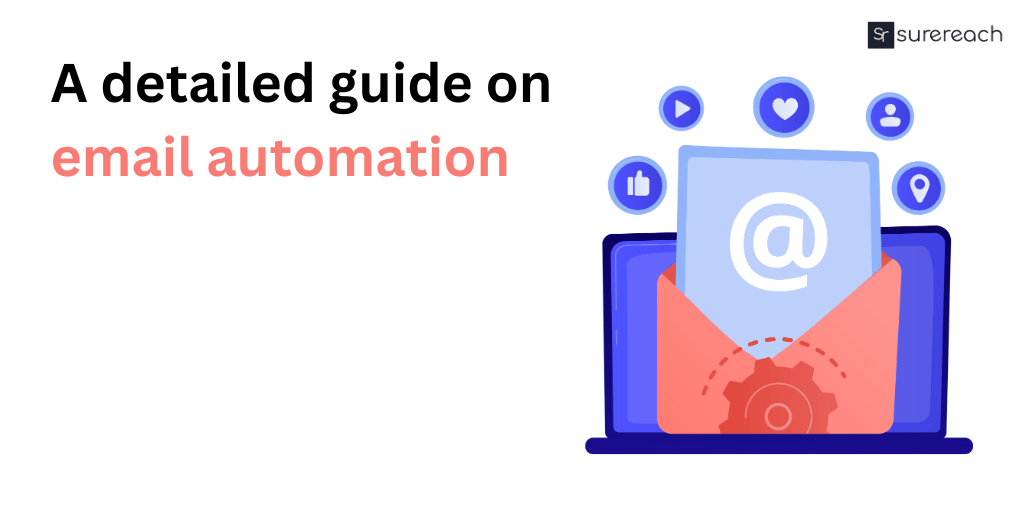Lead Nurturing
Lead nurturing refers to the gentle guidance of leads towards a purchase. When you’re trying to sell something right immediately, nurturing is the reverse of active closing. In case they aren’t ready to buy immediately, you start nurturing leads to stay in their minds. This can entail teaching them about the market and the product, giving them practical resources for their daily lives, and offering them individualized product support.
What is the definition of Lead Nurturing
The act of creating and preserving connections with clients at every stage of their journey, often through marketing and communications messages. Usually, the software is used in automated lead nurturing to deliver messages in response to consumer behaviour or pre-set schedules.
Lead Nurturing Campaigns
Type 1: Education campaign.
You convey your issues and potential solutions through this information in an indirect manner. The campaign comprises informative information that you provide to potential clients via various media. In these advertisements, you frequently don’t even mention your product. Your objective is to gain credibility as a thought leader in your field. Examples include social media posting, YouTube channels, podcasts, and lead nurturing emails.
Type 2: A campaign to keep in touch.
The goal of this campaign type is to maintain contact with leads that are unqualified or have poor qualification. The former are unable to purchase due to short-term issues, while the latter are due to long-term issues. Examples include a biweekly email containing news, figures, and advice about the sector as well as social media interaction with leads.
Type 3. Freemium sign-up campaign
This is the email sequence you send to leads who have signed up for your tool but haven’t made a purchase yet. In this scenario, it makes sense to give the lead useful product information, such as onboarding videos, use cases, guides about features, etc.
Type 4. Cross- and up-selling campaigns.
It may contain emails with information on new products, tailored use cases and blogs on aspects they don’t use, suggestions for enhancing their present procedures, etc.
Lead Nurturing Strategies for B2B Business
- Related to self-serve goods: Companies with minimal entry barriers and products that are free forever will primarily rely on marketing activities to increase leads. The following are a few strategies that might be effective for your company:
- Drip email campaigns: After leads sign up for your tool, this area offers product-related material as newsletters often contain instructional and helpful content rather than encouraging leads to purchase your product. Your mailbox likely has several examples of emails of this type that nurture leads. You can use whatever tool you choose to use to see the whole email campaign they sent you.
- Webinars: Inviting your newsletter subscribers to online events to demonstrate how your solution may address their problems is one of the finest practices for email nurturing. Instead of openly marketing your product, it is a good idea to frame the event as “ways to solve a specific problem.” Consider the difference between “how to use this Chrome extension for Google” and “how to research smarter and easier when writing an article.”
- Communities: It enables you to forge closer ties with both existing and prospective clients. The results of the lead nurturing process include increased up-sales and cross-sales; communities that amplify word-of-mouth; leads learning about suggestions and the success that current customers experience with your product. Additionally, communities offer a lot of input that enables you to address their concerns and improve your product for leads and consumers.
- Related to hybrid (individual to business) products: Companies of this sort typically strike a balance between quantity and quality. Therefore, their approach combines the finest B2B lead nurturing techniques from the first and third tactics. Lead nurturing is done through both sales and marketing channels.
The strategies are:
- Social selling entails producing valuable material with the goal of converting interested followers, interacting, and posting thoughtful comments beneath leads’ blog posts.
- Slow email leads to a nurturing sequence with instructions, articles, and industry news squeezes. Leads who aren’t qualified or aren’t ready to buy may be put on a cadence to get 1-2 emails from you each month.
- Communities, webinars, and newsletters might all be relevant in this situation.
- Related to business-oriented products: For these businesses, a sales staff outfitted with marketing materials and other assistance handles the majority of B2B lead nurturing. You may be familiar with the idea of account-based marketing. It essentially sums up what lead nurturing entails for businesses that offer expensive goods.
So, the lead nurturing examples for the kind of business are as follows:
- Delivering branded presents with a personal touch.
- Arranging events for the discussion of any industry issue, product updates, or product education. Invite your present, devoted clients and leads so that the latter may speak with them and discover more about how your solution might benefit them for great B2B lead nurturing.
- Inviting executives to meetings. It need not be your conference; it might simply be something specialized and compelling for your leads.
- Arranging private, offline get-togethers to spend time apart. maybe connected to their pastime. Your chances of making a sale rise when you establish personal connections with leads.
Sign up and get 20 credits for free!
We have 3 million+ contacts stored to connect you with prospects all over India
Lead Nurturing- Its Benefits
-
Lower cost of client acquisition
It implies that you will handle produced leads strategically if you have a lead nurturing strategy in place. It costs more to create new possibilities than it does to keep a nurturing system in place.
-
Raising income
Your income opportunities are increased by using your best lead nurturing tactics to increase the client base. For the majority of businesses, the market of leads who are prepared to buy right now is objectively small.
-
Brand
You increase brand recognition by nurturing leads of various kinds. If done correctly, people begin to view your business as the industry leader to turn to. They will recommend your brand to others looking for specific information. Additionally, if you support them on social media, their fans will be aware of and appreciate your efforts.
-
Source of leads and devoted clients
Through lead nurturing phases, those who eventually become your clients have a better experience and are more inclined to recommend your business. Even those who don’t will like your approach and be able to suggest you to their friends.
Conclusion
One must remember that cold and slightly warm leads aren’t the only ones that can develop. At every point of the purchasing process, even when a lead is already a customer, nurturing is a smart idea. There could be nurturing programmes for education, communication, freemium, and upselling.
One requires the proper customer profile, lead generation and lead qualifying tools, great content, and the appropriate toolbox for a satisfying lead nurturing process. Your strategies shouldn’t limit your attention to email drip campaigns instead try other strategies depending on your business. Reduced client acquisition costs, greater revenue, enhanced brand exposure, and improved word-of-mouth are few benefits of lead nurturing.
If you find this blog informative do not hesitate to get in touch with our team for more assistance with your B2B Strategies for your business growth.








Sanidhya Arora
More posts by Sanidhya Arora